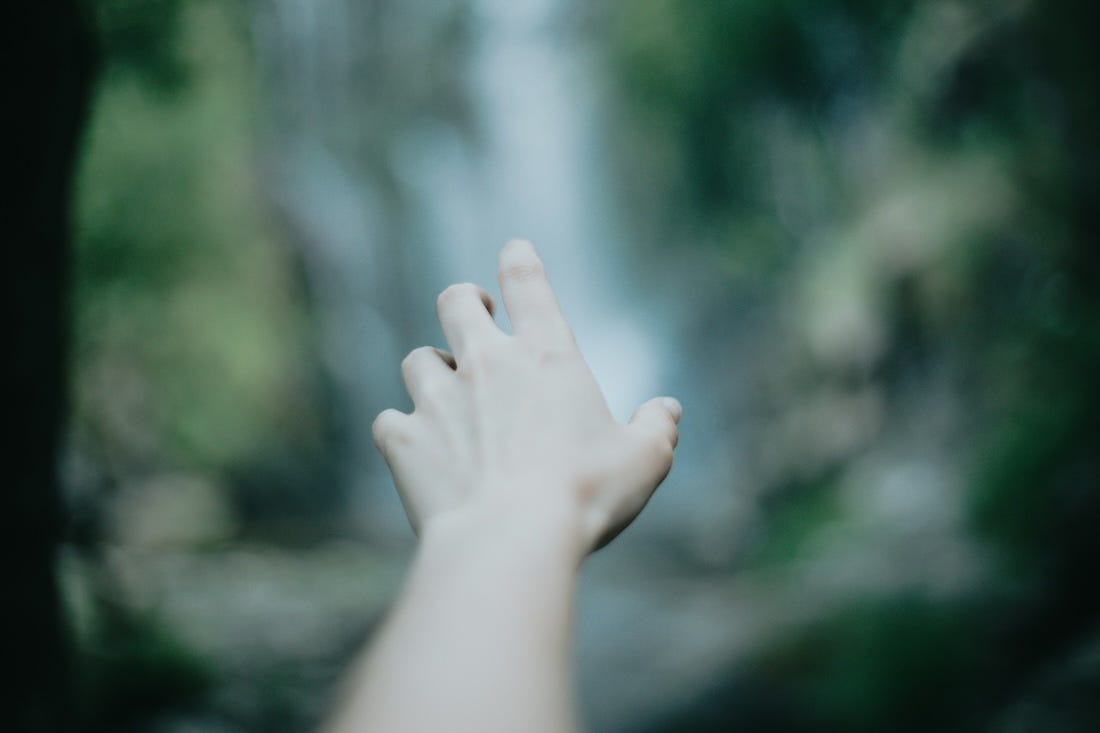Identity: Releasing Again (& Again)
an exploration of non-attachment
I’ve been thinking a lot about identity.
And when people ask me, “what will you do next,” how to respond.
In the last month, its felt like an impossible question to answer from the liminal space I’m sitting in. Between all that I’ve built and all that is shifting. All the stability cultivated and the knowledge life is calling for more flexibility. Years of practice in different realms of life and now seeing how to transition that dedication onto a new (or adjacent) path.
In the midst of this, I’m reminded non-attachment (Vairagya) is an important companion to practice (Abhyasa).
Sutra 1.12: abhyāsa-vairāgyābhyāṃ tan-nirodhaḥ
Continuous endeavor (abhyasa) and non-attachment (vairagya) are both required to constrain that (i.e. mentality or memory).
From Patanjali's Yoga Sutra. Penguin Books. 2008. Translated from Sanskrit by Dr. Shyam Ranganathan.
Practice is how I’ve cultivated so many things I’m grateful for. My creative practices, my therapy practices, my spiritual practices. The different skills that allowed me to build my career, and the ones that help me build relationships.
But there have been moments in life where I’ve felt frustrated my efforts weren’t resulting in an identity I wanted.
Why wasn’t writing making me a published author, why wasn’t painting making me a successful artist, why wasn’t therapy making me a better partner.
What I haven’t always been able to see, and what yoga continues to teach me, is attaching my identity to outcome keeps me stuck in harmful loops. Loops that push me farther, and farther away from the Self. I keep defining myself based on specific events or memories that make up a small portion of my life’s journey.
I can’t call myself a writer because I didn’t reach a certain level of success. I can’t be an artist because I’ve failed at starting a business multiple times. I don’t deserve this happiness, because I was unkind back then.
When I practice non-attachment, stepping back into the (compassionate) non-judgmental witness, I see these different practices for their fullness. Not their outcomes. Writing helps me process my world, art brings beauty into my life and I am allowed to evolve.
To release false stories, attachments, takes effort. It takes choosing to actively practice non-attachment. It’s a practice that requires dedication in and of itself.
Dr. Shyam Ranganathan writes, “to approach the project of self-definition reactively is to live life as most people do. To approach the project of self-definition actively is to practice yoga.” (Patanjali's Yoga Sutra. Penguin Books. 2008.).
So I am in this liminal space, worried about how to answer the question of what will I do next (because I’m human), reminding myself to be active in this project. That might look like not having an answer today - or tomorrow - as I make space for releasing, lovingly un-attaching, and releasing again.
If you want to go deeper…Swami Jnaneshvara Bharati is a resource I use a lot when reading the Yoga Sutras and he shares this on his site:
Two practices: Abhyasa and vairagya are companion practices, and are the means of mastering (nirodhah, 1.2) the many levels of mind, so as to experience the true Self (1.3). All of the many other practices of Yoga rest on these two principles.
Two directions: There are two directions that one can go in life as well as individual actions, speech, or thoughts. One direction is towards truth, reality, Self, or spiritual realization. The other direction is opposite, and involves those lifestyles, actions, speech, and thoughts that take one away from the higher experiences.
Abhyasa means cultivating the lifestyle, actions, speech, and thoughts, as well as the spiritual practices that lead in the positive direction (rather than going in the opposite direction, away from the positive, and towards the negative).
Vairagya is the practice of gradually letting go of the mental colorings (1.5, 2.3) that lead one away from the spiritual (rather than going in the opposite direction, giving in to the attachments and aversions).
Discrimination is key: To be able to do the practices and to cultivate non-attachment, it is necessary to become better and better at discriminating between what actions, speech, and thoughts take you in the right direction, and those which are a diversion (2.26-2.29, 3.4-3.6). This discrimination is both a foundation practice and also the subtler tool of the inner journey.


